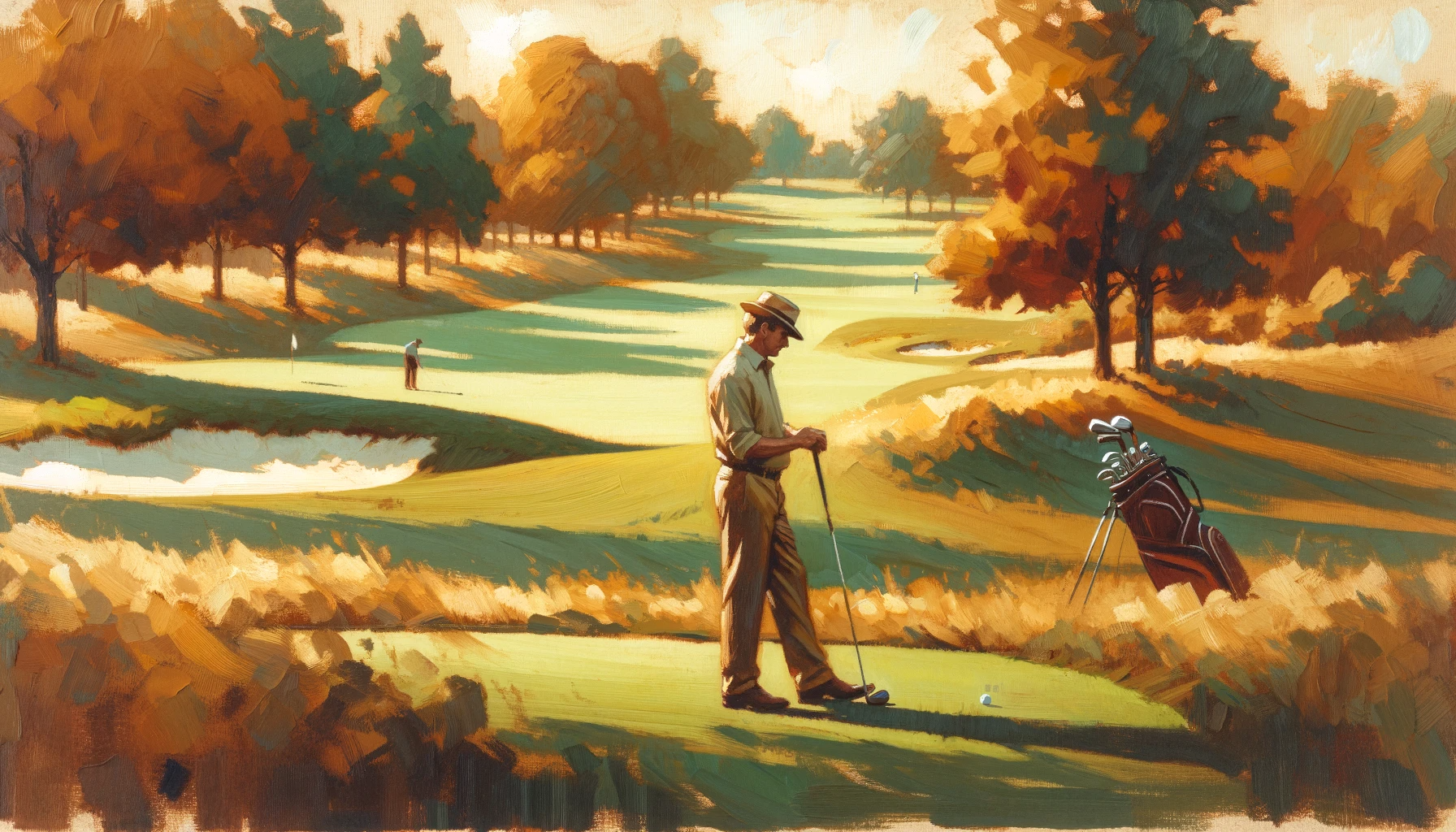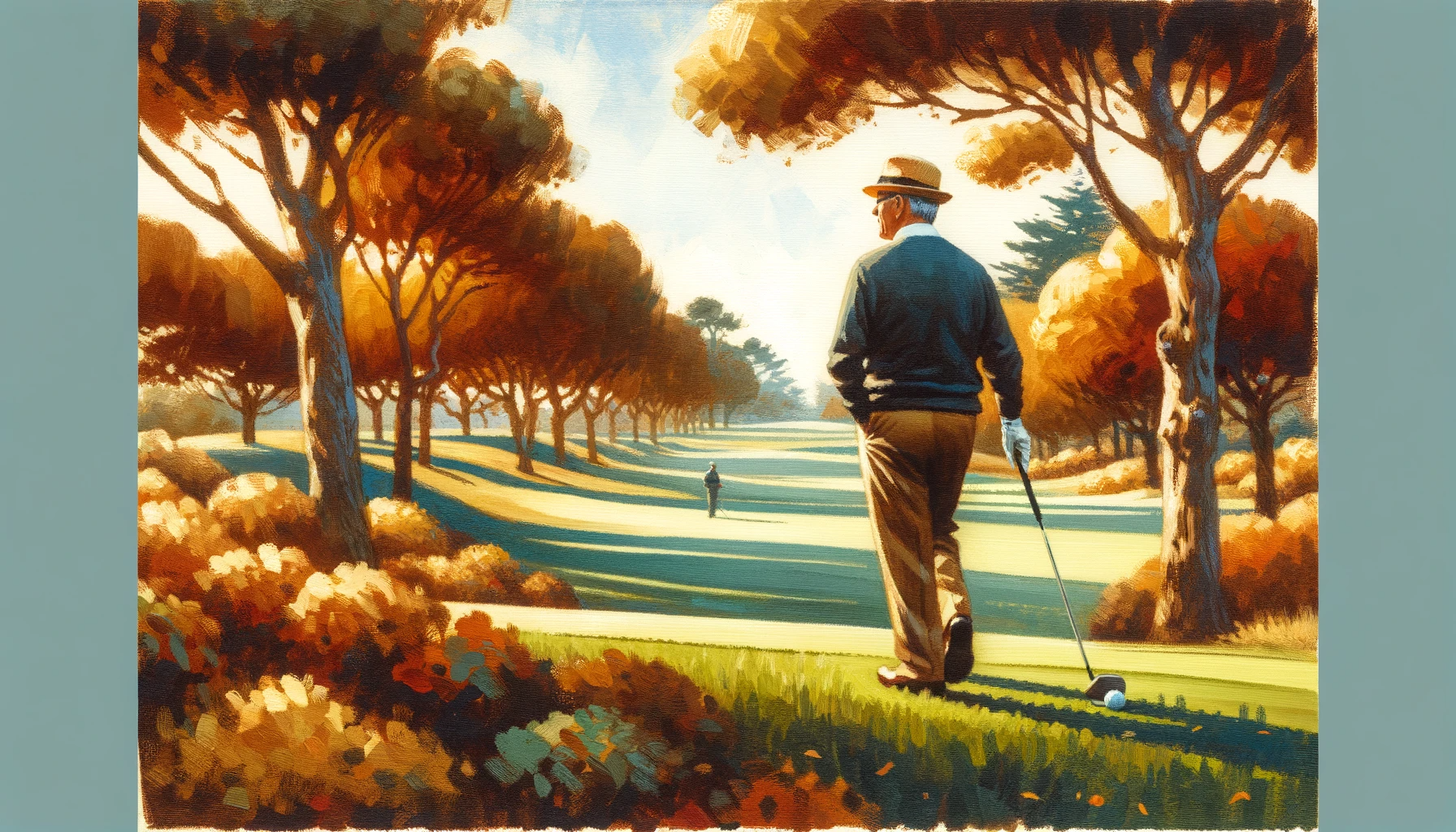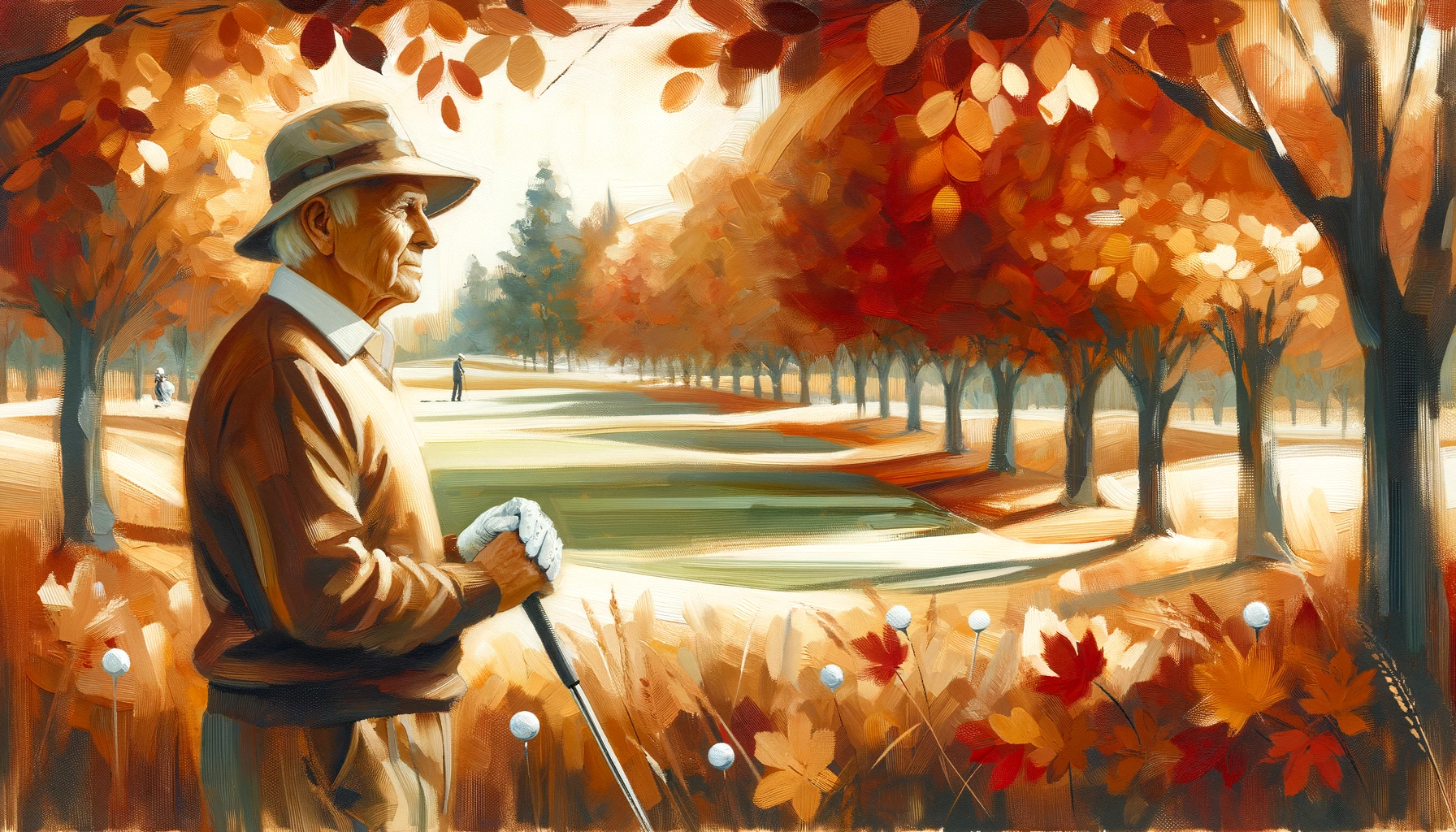Short Game Tips for Golf: Your Guide to Lower Scores
Looking to elevate your golf game? Dive into our article focused on short game tips for golf, a treasure trove for golfers like you seeking to refine their skills. In just a few minutes, grasp key insights on improving putting accuracy, mastering chipping techniques, and choosing the right wedge. Don't have time to read it all? Check out our key takeaways and FAQs at the bottom for a quick boost to your game. Join the Golfeaser community today, and transform your short game, one stroke at a time.
Hey there, fellow golf enthusiast!
Are you struggling with your short game, feeling like each round of golf is a missed opportunity to lower your score? I get it. The short game is often where matches are won or lost, and it can be incredibly frustrating when your putting or chipping doesn't go as planned.
Let's face it, the agony of missing a short putt or flubbing a chip can leave even the most seasoned golfers feeling deflated. It's not just about the physical technique; it's a mental game too. You're not alone in this. Many golfers, from beginners to weekend warriors, often find themselves in a tangle when it comes to the subtleties of the short game.
But here's the good news: mastering the short game is within your reach!
It's all about understanding the right techniques, choosing the right equipment, and practicing with purpose. I'm here to share insider tips and strategies, honed from years of experience and training, to help you elevate your game. We'll delve into effective putting techniques, beginner-friendly chipping tips, and selecting the perfect wedge for every situation. It's time to transform your short game from a source of frustration into your biggest asset on the course.
Let's dive in and unlock the secrets to a successful short game!
 Discover the elegance of short game mastery on a serene course.
Discover the elegance of short game mastery on a serene course.How Can I Improve My Putting Accuracy?
As a fellow golfer, I've had my fair share of ups and downs with putting. Let me share with you some valuable insights that have transformed my game.
1. Understand the Basics: It all starts with the fundamentals. A good putting stance and grip are crucial. Keep your eyes directly over the ball and your hands slightly ahead of the clubhead at address. This setup promotes a smooth, pendulum-like stroke.
2. The Art of Reading Greens: One of my early lessons in golf was learning to read the greens. Pay attention to the contours and slopes. Is the grass wet or dry? These factors influence how the ball will roll. Trust me, spending time mastering this can dramatically improve your accuracy.
3. Consistent Stroke Practice: I remember spending hours on the practice green, repeating my stroke. Consistency is key. Aim to make your backstroke and follow-through equal in length. This balance ensures a controlled and consistent impact on the ball.
4. Mental Focus: Golf is as much a mental game as it is physical. Stay calm and focused. Visualize the path of the ball to the hole before every putt. This mental imagery can significantly boost your confidence and accuracy.
5. Experiment with Different Putters: Not all putters are created equal. I've switched putters a few times in my career, each time learning something new about my style. Weight, length, and the type of grip all play a role in how well you putt. Don't be afraid to experiment until you find the one that feels right.
6. Drills for Improvement: Simple drills can make a big difference. Try the 'coin drill' for accuracy - place a coin a few feet away and try to roll the ball over it. For distance control, practice putting to the fringe of the green from various distances, aiming to stop the ball as close to the edge as possible without going over.
Improving your putting accuracy is a journey, but with these tips and regular practice, you'll see noticeable improvements. Remember, patience and perseverance are your allies on this journey. Let's get those putts rolling true and straight!
 Experience the warmth of golf amidst nature's harmony.
Experience the warmth of golf amidst nature's harmony.What Are Effective Chipping Techniques for Beginners?
Chipping was a game-changer for me, and I'm excited to help you make it one for you too. Here's a breakdown of effective chipping techniques that I've learned and refined over my years of golfing:
1. The Right Equipment: Choosing the right club is half the battle. For beginners, a sand wedge or a pitching wedge often works best due to their loft and bounce. These clubs can help you get the ball airborne and landing softly on the green.
2. Stance and Posture: Your stance for chipping should be narrower than your full swing stance. Place the ball back in your stance, with your weight favoring your front foot. This setup promotes a downward strike, which is crucial for a good chip.
3. The Grip: I found that a firmer grip helps in chipping. It gives you more control over the club. However, remember, 'firm' doesn't mean 'tight'. Keep your wrists firm but your arms and shoulders relaxed.
4. Controlled Swing: A big revelation for me was when I learned that chipping is more of a wrist action than a full swing. Use your shoulders and arms to control the swing and let your wrists hinge slightly. The key is to keep it controlled and smooth.
5. Focus on the Landing Spot: Instead of focusing on the hole, pick a spot on the green where you want the ball to land. This approach helps in better judging the required strength and angle for your chip.
6. Practice Different Lies: Balls won’t always lie perfectly on the course. Practice chipping from various lies - the rough, sand, uphill, downhill. This experience is invaluable.
7. Mental Aspect: Like putting, chipping also requires a calm and focused mind. Visualize the shot before executing it. A clear mental image of the shot can greatly improve your execution.
Remember, chipping, like any other golf skill, requires practice and patience. Don't get discouraged by initial mishits. Keep practicing these techniques, and you'll soon find yourself confidently chipping onto the green and watching your scores drop.
 Autumn hues and golf views: perfecting the short game.
Autumn hues and golf views: perfecting the short game.How Do I Choose the Right Wedge for Different Short Game Situations?
Choosing the right wedge for different short game situations was a puzzle I had to solve in my golfing journey. Let me share some insights that I believe will help you tremendously.
1. Understanding Wedge Types: There are primarily four types of wedges - pitching wedge, gap wedge, sand wedge, and lob wedge. Each has a different loft and serves a specific purpose. Familiarize yourself with these to understand which situations they are best suited for.
2. Loft Considerations: The loft of the wedge determines how high and how far the ball will go. For instance, a lob wedge (higher loft) is great for high shots over obstacles, while a pitching wedge (lower loft) is ideal for longer, lower shots.
3. Bounce Angle: The bounce of a wedge refers to the part of the club that hits the ground. A high bounce angle is better for soft conditions or sand, as it prevents the club from digging in. Conversely, a low bounce is preferable for hard conditions or tight lies.
4. Personal Experience with Wedges: I remember experimenting with different wedges in various conditions. It’s crucial to practice with your wedges to understand how they perform on the course. Don’t shy away from testing different lofts and bounces in practice rounds.
5. Distance Gapping: Ensure there’s a consistent distance gap between the wedges in your bag. This consistency helps in choosing the right club based on the distance to the green.
6. Custom Fitting: If possible, get a custom fitting. It can make a significant difference for me. A professional can help you choose the right wedges based on your swing and the typical course conditions you play in.
Choosing the right wedge for different situations in the short game can seem daunting, but with a bit of knowledge and a lot of practice, it becomes an invaluable part of your golfing strategy. Keep experimenting and practicing, and you'll find your short game improving significantly.
 Tranquility meets golf: the journey of a weekend golfer.
Tranquility meets golf: the journey of a weekend golfer.Key Takeaway: Mastering Your Short Game in Golf
- Remember, the key to a great short game lies in practice, patience, and the right techniques.
- Putting: Focus on your stance, stroke consistency, and green reading skills.
- Chipping: Work on your stance, swing control, and equipment familiarity.
- Wedge Selection: Understand the types, lofts, and bounces, and practice with different wedges to see what works best in various situations.
Take Action and Join the Golfeaser Community
- Don’t just read about these tips; put them into action on the course! Practice these techniques and watch your short game improve.
- Share your progress, challenges, and victories with us in the Golfeaser community. We’re all here to learn and grow together.
- Sign up for our newsletter to stay updated with more insights and tips.
- Embrace the Golfeaser Manifesto: live for the game, improve constantly, and enjoy every round of golf you play.
Your Turn to Shine
Are you ready to transform your short game and impress yourself and your buddies on the course? How will you apply these tips in your next round? Join us at Golfeaser, share your story, and let's all improve together. What's your next step in mastering the short game?
FAQs About Short Game Tips for Golf
How can I improve my putting technique?
How can I improve my putting technique?
To improve your putting, focus on a consistent stance, a smooth pendulum swing, and reading the greens accurately. Practice regularly to develop muscle memory and confidence.
What are some effective chipping strategies for beginners?
What are some effective chipping strategies for beginners?
Begin with choosing the right club, typically a sand or pitching wedge. Practice a controlled, wrist-involved swing and aim for a specific landing spot on the green to improve control and accuracy.
How do I select the right wedge for different shots?
How do I select the right wedge for different shots?
Consider the loft and bounce of the wedge based on the shot you need. Higher loft wedges are suitable for lob shots, while lower loft wedges work well for longer chip shots. The bounce should match the course conditions.
What drills can help improve my short game?
What drills can help improve my short game?
Practicing putting drills like the 'gate drill' or the 'coin drill' can improve accuracy. For chipping, try the 'hula hoop drill' to enhance your control over where the ball lands and rolls.
How important is club selection in the short game?
How important is club selection in the short game?
Club selection is crucial. It affects the trajectory and roll of the ball. Experiment with different clubs during practice to understand how each club can be used in various short game scenarios.
Is there a mental aspect to improving the short game?
Is there a mental aspect to improving the short game?
Absolutely. Mental focus and visualization are key. Visualize the shot before taking it and stay calm under pressure. Developing a pre-shot routine can also help improve focus and consistency.
How can beginners practice short game effectively?
How can beginners practice short game effectively?
Start with the basics of stance and swing. Practice regularly, focusing on different scenarios like uphill, downhill, and sand traps. Use drills to improve technique and build confidence.
What common mistakes should I avoid in the short game?
What common mistakes should I avoid in the short game?
Avoid overcomplicating the swing, neglecting the mental aspect, and inconsistent practice. Also, using the wrong club for the situation can lead to poor shots.
How does course management play a role in the short game?
How does course management play a role in the short game?
Understanding the course layout, obstacles, and greens can help you make better club choices and shot strategies. This knowledge is key to navigating short game challenges effectively.
Can short game improvement lower my overall golf score?
Can short game improvement lower my overall golf score?
Yes, improving your short game can significantly lower your scores. Most shots in golf are taken within 100 yards of the green, so mastering the short game can lead to fewer strokes per round.


















